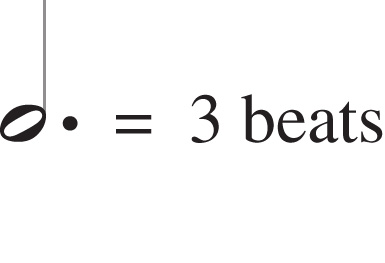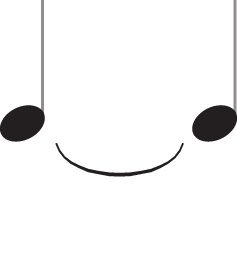If you're trying to learn how to play music, read music, or brush up on improvising and performing with other musicians, music theory is important. However, you don't need to know every last tidbit that the many theorists around the world have written down. You just need to become familiar with some of the basics. You need to know the names of the notes, and you must understand time signatures, intervals, and chord progressions.
>
>
Note Names in the U.S. and U.K.
In the world of music, you may encounter different names for the many notes used. The U.S. and U.K. standard terms differ, but the U.S. names — which were originally translated from the German names for the notes because so many German composers immigrated to the United States in the 19th century — are more universally standard. The U.K. names are also used in medieval music and in some classical circles. The following table shows the common notes and their U.S. and U.K. names.
| U.S. Note Name | Note | U.K. Note Name |
|---|---|---|
| Double whole | Breve | |
| Whole | Semibreve | |
| Half | Minim | |
| Quarter | Crotchet | |
| Eighth | Quaver | |
| Sixteenth | Semiquaver | |
| Thirty-second | Demisemiquaver |
>
>
>
Extending Notes with Dots and Ties
All notes have a certain value, indicated by the size and shape of the note, that determines how long a pitch should be held by the voice or an instrument. Sometimes, however, you want to add to the value of a note to create syncopation or other interest in your musical piece. You can extend a note's value in written music using dots and ties. Here's the lowdown on each:
Augmentation dot: This dot indicates that a note's value is increased by one half of its original value. The most common use of the dotted note is when a half note is made to last three quarter-note beats instead of two, as shown in the figure. Less common is the dotted whole note. This dotted note means the whole note's value is increased from four beats to six beats.

Tie: Ties connect notes of the same pitch to create one sustained note instead of two separate ones. When you see a tie, simply add the notes together. For example, a quarter note tied to another quarter note equals one note held for two beats, as shown in the figure.

>
>
>
Understanding Simple and Compound Time Signatures
Written music always contains a time signature, which looks like a fraction and is found at the beginning of a piece of music. In the time signature, the upper number represents the number of beats per measure, and the lower one represents the time value of each beat. You'll encounter the two following main types of time signatures:
Simple: With simple time signatures, the beat of a piece of music can be broken down into two-part rhythms. Simple time signatures are the easiest to count, because a one-two pulse in a piece of music feels the most natural to a listener and a performer. Common examples of simple time signatures are 4/4, 3/4, 2/4, 3/8, and 2/2.
Compound: In compound time signatures, the beat is broken down into three-part rhythms. The top number is evenly divisible by 3, with the exception of time signatures where the top number is 3. Also, each beat is divided into three components, creating a one-two-three pulse. Common examples of compound time signatures are 6/8, 12/8, and 9/4.
>
>
>
Measuring the Distance between Pitches with Intervals
The distance between two musical pitches is called an interval. Intervals are important to music because they build scales and chords. In other words, music gets its richness from intervals. Composers and musicians use two types of intervals: harmonic and melodic intervals.
You get a harmonic interval when you play two notes at the same time.
You get a melodic interval when you play two notes separately in time, one after the other.
The identity of both harmonic and melodic intervals is determined by two things:
Quantity: You determine an interval's quantity by simply adding the lines and spaces included in the interval on the music staff. Accidentals (sharps and flats), which raise or lower a pitch by a half step, don't matter when counting interval quantity. Interval quantity may be
Unison (or prime)
Second
Third
Fourth
Fifth
Sixth
Seventh
Octave
Quality: Interval quality is based on the number of half steps from one note to another. Unlike in interval quantity, accidentals do matter in interval quality. The terms used to describe quality, and their abbreviations, are as follows:
Major (M): Contains two half steps between notes
Minor (m): Contains a half step less than a major interval, or one half step between notes
Perfect (P): Refers to the harmonic quality of primes, octaves, fourths, and fifths
Diminished (dim): Contains a half step less than a minor or perfect interval
Augmented (aug): Contains a half step more than a major or perfect interval
>
>
>
Creating Music with Chord Progressions
A chord progression is a group of chords that you use to create music. Some chord progressions just sound better than others, so it pays to experiment. The following table, which shows commonly used major-key chords and the other chords they often lead to, can help you in deciding which chords will come next in your compositions.
| Chord | Leads To |
|---|---|
| I | Can appear anywhere and lead anywhere |
| ii | I, V, or vii° chords |
| iii | I, IV, or vi chords |
| IV | I, ii, V, or vii° chords |
| V | I, vi chords |
| vi | I, ii, iii, IV, or V chords |
| vii° | I chord |
>
>
dummies
Source:http://www.dummies.com/how-to/content/music-theory-for-dummies-cheat-sheet.html
No comments:
Post a Comment